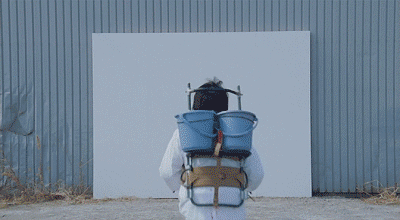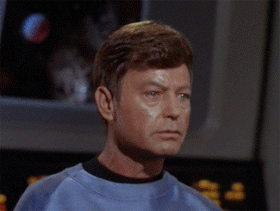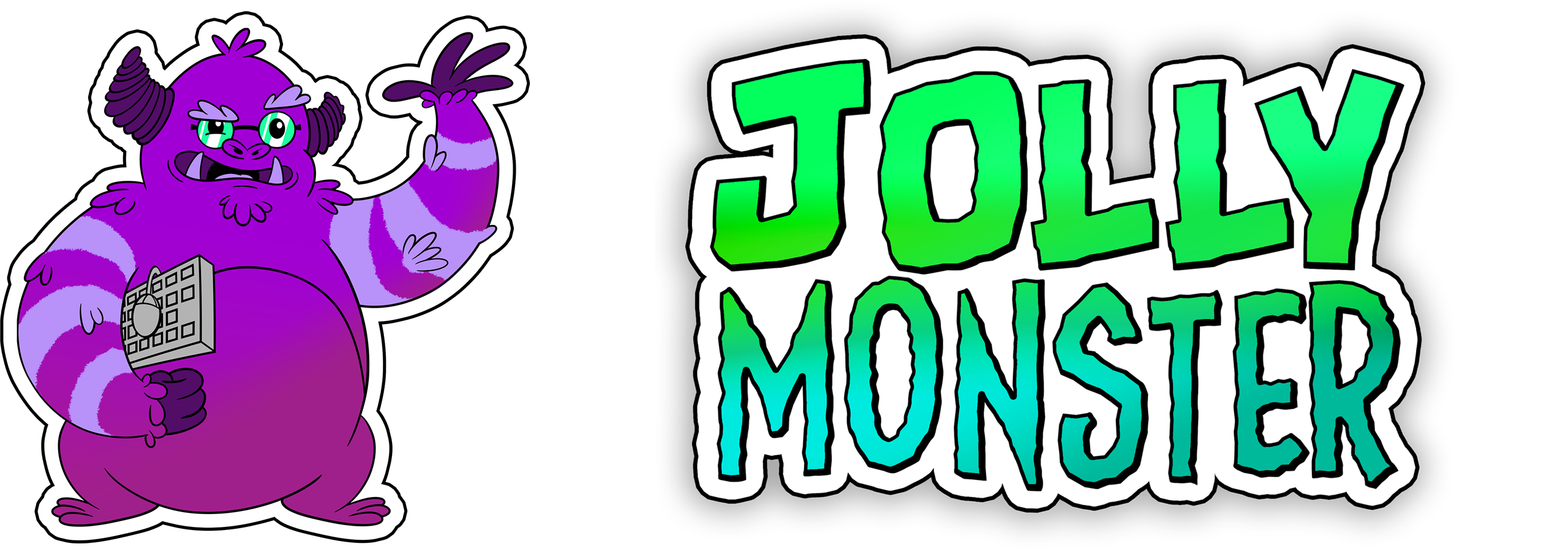Starting to test out new mechanics for Bad Guys Good Guys. This time it’s particles … and a few other things !
Hey guys,
We are back after a short summer break with more tutorials.
Today we go back to our C++ Fundamentals lessons by looking at possession and how we can control different charactesr in our world. In addition to that we are going to setup a few materials so we can change our characters appearance to showcase the possession a bit better.
As usual you can find the start project on our GitHub page.
Possession ? That sounds scary

Don’t worry it’s not halloween yet, and possession is just a fancy term for taking complete control over another character or actor within your game world.
This allows our player to be able to experience different character behaviors, it allows for playing different stories like in GTA 5 or you can use it for simple mount mechanics. Tons of possibilities.
So let’s take a look at how we possess our characters
// save a copy of our controller AController* SavedController = GetController(); // unpossess first ( helps with multiplayer ) SavedController->UnPossess(); // disable movement mode GetCharacterMovement()->SetMovementMode(EMovementMode::MOVE_None); // possess our new actor SavedController->Possess(Cast<APawn>(ActorToPossess));
Seems pretty straight forward but let’s see what is going on here.
First we end up saving a copy of our current player controller so we can reference it later. This can also be used to save the “AI” brain of a character in the world and put it back when we unpossess said character.
We then go ahead and unpossess the current controller to ensure it’s cleaned up.
We then go ahead and set the movement mode on our player to none so he doesn’t move when we leave his body.
And lastly we possess the actor of our choosing.
So what about these materials ? Are they also haunted ?
 As far as we know, they are not, but we only know so much.
As far as we know, they are not, but we only know so much.
Materials are pretty easy to setup and change, you just need to be aware where on the character in question they reside. Let’s take a look at this example
header
UPROPERTY(EditDefaultsOnly, Category = Possession) class UMaterialInterface* DefaultMaterialBody; UPROPERTY(EditDefaultsOnly, Category = Possession) class UMaterialInterface* DefaultMaterialChest;
cpp
if(DefaultMaterialBody)
{
GetMesh()->SetMaterial(0, DefaultMaterialBody);
}
if(DefaultMaterialChest)
{
GetMesh()->SetMaterial(1, DefaultMaterialChest);
}
As you can see we do really just a few things to switch over the materials.
We first define the properties on our blueprint so we can assign material instances to our player.
Then based on our logic we can set the material to the newly defined variables.
The only little gotcha is to ensure you are referencing the right material index on your mesh. In the case of our Unreal mannequin he has two materials, one for the body and the other for the chest piece. They are respectively assigned to index 0 and 1 on the mesh. So just ensure you are setting your material on the correct section of your model.
It still feels like a need an old priest and a young priest

Nope that’s really it friends, unpossess current controller and possess new target. Rinse and repeat.
Here is a much more involved example lifted from our sample project combining both material switching as well as possession
void AUE4Fundamentals11Character::Interact()
{
FVector Start;
FVector End;
FVector PlayerEyesLoc;
FRotator PlayerEyesRot;
GetActorEyesViewPoint(PlayerEyesLoc, PlayerEyesRot);
Start = PlayerEyesLoc;
End = PlayerEyesLoc + (PlayerEyesRot.Vector() * LineTraceDistance);
FCollisionQueryParams TraceParams(FName(TEXT("InteractTrace")), true, this);
FHitResult InteractHit = FHitResult(ForceInit);
bool bIsHit = GetWorld()->LineTraceSingleByChannel(InteractHit, Start, End, ECC_GameTraceChannel3, TraceParams);
if(bIsHit && InteractHit.GetActor() != this)
{
// Log(ELogLevel::WARNING, InteractHit.Actor->GetName());
// start to end, green, will lines always stay on, depth priority, thickness of line
DrawDebugLine(GetWorld(), Start, End, FColor::Green, false, 5.f, ECC_WorldStatic, 1.f);
// implements interface
if(InteractHit.GetActor()->GetClass()->ImplementsInterface(UInteractiveActor::StaticClass()))
{
IInteractiveActor::Execute_Interact(InteractHit.GetActor());
}
else if(InteractHit.GetActor()->IsA(ACharacter::StaticClass()))
{
// check to see if we are a possessed entity
if(bIsCurrentlyPossessed)
{
bIsCurrentlyPossessed = false;
if(DefaultMaterialBody)
{
GetMesh()->SetMaterial(0, DefaultMaterialBody);
}
if(DefaultMaterialChest)
{
GetMesh()->SetMaterial(1, DefaultMaterialChest);
}
}
AUE4Fundamentals11Character* PossessableCharacter = Cast<AUE4Fundamentals11Character>(InteractHit.GetActor());
if(PossessableCharacter)
{
if(!PossessableCharacter->bIsCurrentlyPossessed)
{
// handle possession
if(!SavedController)
{
// save the controller
SavedController = GetController();
}
// unpossess first ( helps with multiplayer )
SavedController->UnPossess();
// disable current player state management
bIsKeyboardEnabled = false;
bIsRunning = false;
bIsArmed = false;
// disable movement mode
GetCharacterMovement()->SetMovementMode(EMovementMode::MOVE_None);
// possess our new actor
SavedController->Possess(Cast<APawn>(InteractHit.GetActor()));
// enable movement back on the possessed actor
PossessableCharacter->GetCharacterMovement()->SetMovementMode(EMovementMode::MOVE_Walking);
// set the values for our possession materials
if(PossessableCharacter->PossessMaterialBody)
{
PossessableCharacter->GetMesh()->SetMaterial(0, PossessableCharacter->PossessMaterialBody);
}
if(PossessableCharacter->PossessMaterialChest)
{
PossessableCharacter->GetMesh()->SetMaterial(1, PossessableCharacter->PossessMaterialChest);
}
// ensure the new player is correctly marked as possesed and can be interacted with
PossessableCharacter->bIsKeyboardEnabled = true;
PossessableCharacter->bIsCurrentlyPossessed = true;
}
}
}
}
else
{
DrawDebugLine(GetWorld(), Start, End, FColor::Purple, false, 5.f, ECC_WorldStatic, 1.f);
}
}
As you can see I am doing a few moves to update the material on the target mesh we want to possess and reset the materials on the mesh we are currently occupying.
Additionally there is a bit of logic to update the state of a few variables that control our animation presentation. For example I am turning off the armed animation logic.
But otherwise it’s just a call to Possess / Unpossess as well as SetMaterial
That’s it folks, hope you found this helpful and here are a few links for some light reading:
Hey guys,
Today we resume our C++ Fundamentals lessons by looking at interfaces and how they can help simply our life by allowing for common contracts to be shared by different game actors.
As usual you can find the start project on our GitHub page.
What are these tags ? And why do I care ?

Tags are essentially a collection of strings that can be applied to an Actor or an Actors Component and then referenced by other Actors or parts of the game world by those tags.
Very similar to using tags on a blog to include metadata for search engines to query … like this blog !
Tags ?! We don’t need to no stinking tags !

Sure you do, and they are really easy to use which is why this post is going to be super short.
Take a look, in this case we are displaying all tags for a specific actor.
// iterate over all of our actors
for(TActorIterator<AActor> ActorIterator(GetWorld()); ActorIterator; ++ActorIterator)
{
AActor* Actor = *ActorIterator;
// ensure actor is not null
// ignore self if found
// ensure we find actors of a specific interface only
if(Actor && Actor != this && Actor->GetClass()->ImplementsInterface(UInteractiveActor::StaticClass()))
{
// display all available tags for an actor
for(FName Tag : Actor->Tags)
{
GEngine->AddOnScreenDebugMessage(-1, 5.f, FColor::Cyan, Tag.ToString());
}
}
}
We can also just check for a specific tag without iterating over all of them by using ActorHasTag method.
if(Actor->ActorHasTag(TagToCheck))
{
IInteractiveActor::Execute_Interact(Actor);
}
Wait you forgot about lerping ? What is lerping !?

Lerping is a way of translating between vector A and vector B over some period of time.
For example if you need to scale an object from one size to another you can use FMath::Lerp to accomplish this.
BaseMesh->SetWorldScale3D(FMath::Lerp(BaseMesh->GetComponentScale(), FVector(2.f, 2.f, 2.f), 0.05f));
In this example we go from vector A ( GetComponentScale() of our mesh ) to vector B ( 2x the size ) over a period of time represented by 0.05f time.
Take a look.
That’s it folks, not much more reading but here are a few links for you to check out:
Hey guys,
Today we resume our C++ Fundamentals lessons by looking at interfaces and how they can help simply our life by allowing for common contracts to be shared by different game actors.
As usual you can find the start project on our GitHub page.
What is an interface ? Tell me !

An interface is an abstract definition of a contract. What this means is an interface defines how our class can be interfaced ( hah ! ) with while keeping the implementation details away.
More than that it allows us to create a common method signature between various disparate objects.
Consider I have an interface that has a method on it called “DoStuff” and I have two objects, Dog and Person, that inherit this interface. When I call Dog->DoStuff he may perform a trick while if I call the same method of Person->DoStuff he may tell me to fuck off and to stop bothering them. But from the point of view of the code interacting with those actors it’s the same behavior.
This allows for a lot of re-use and generic implementations while keeping the details of those implementations specific.
This all seems very abstract, show me code !

So let’s take a look at how an interface class is structured
UINTERFACE(MinimalAPI)
class UInteractiveActor : public UInterface
{
GENERATED_BODY()
};
/**
*
*/
class UE4FUNDAMENTALS09_API IInteractiveActor
{
GENERATED_BODY()
// Add interface functions to this class. This is the class that will be inherited to implement this interface.
public:
UFUNCTION(BlueprintCallable, BlueprintNativeEvent, Category = "Interact")
void Interact();
};
As you can see it’s pretty thin in definition, we simply have a class that inherits from UInterface and then defines the method signature of “Interact”.
Excellent now we are cooking with fire, now what ?
Once we have the interface in place we now start including it on our objects. Let’s take a look at our InteractiveProp.
UCLASS()
class UE4FUNDAMENTALS09_API AInteractiveProp : public AActor, public IInteractiveActor
{
GENERATED_BODY()
public:
// Sets default values for this actor's properties
AInteractiveProp();
UPROPERTY(VisibleAnywhere, BlueprintReadWrite, Category = "Interact")
class UStaticMeshComponent* BaseMesh;
protected:
// Called when the game starts or when spawned
virtual void BeginPlay() override;
public:
// Called every frame
virtual void Tick(float DeltaTime) override;
UFUNCTION(BlueprintCallable, BlueprintNativeEvent, Category = "Interact")
void Interact(); // prototype declaration
virtual void Interact_Implementation() override; // actual implementation of our interact method
private:
bool bIsBig;
};
The major thing to note is that in order to leverage the interface, we modify our class signature to bring in “IInteractiveActor”
class UE4FUNDAMENTALS09_API AInteractiveProp : public AActor, public IInteractiveActor
Then we overwrite the Interact method by first declaring the prototype method signature and then the implementation one. Please note that the “_Implementation” is important and has to be exact for the reflection mechanic in Unreal to process your interface + implementation.
UFUNCTION(BlueprintCallable, BlueprintNativeEvent, Category = "Interact") void Interact(); // prototype declaration virtual void Interact_Implementation() override; // actual implementation of our interact method
So that was pretty straight forward, now how do I use these guys ?

To execute interface definitions we have a few ways of going about.
First we need to determine if an object uses an interface and we have two ways of checking that.
- Based on the ImplementsInterface check
- Using a cast to an interface object
Here is the first example
InteractHit.GetActor()->GetClass()->ImplementsInterface(UInteractiveActor::StaticClass())
And the second one
IInteractiveActor* InteractiveActor = Cast<IInteractiveActor>(InteractHit.GetActor());
if(InteractiveActor)
{
// do stuff
}
Once you determine if an object has an interface the way you execute a call on that object is by passing it into the interface “Execute_” call.
IInteractiveActor::Execute_Interact(InteractHit.GetActor());
This basically says, for interface InteractiveActor Execute the method Interact and pass in our Actor on which that method will be triggered.
Here is a full code block that does this logic using a line trace fired from the player against an object.
void AUE4Fundamentals09Character::Interact()
{
FVector Start;
FVector End;
FVector PlayerEyesLoc;
FRotator PlayerEyesRot;
GetActorEyesViewPoint(PlayerEyesLoc, PlayerEyesRot);
Start = PlayerEyesLoc;
End = PlayerEyesLoc + (PlayerEyesRot.Vector() * LineTraceDistance);
FCollisionQueryParams TraceParams(FName(TEXT("InteractTrace")), true, this);
FHitResult InteractHit = FHitResult(ForceInit);
bool bIsHit = GetWorld()->LineTraceSingleByChannel(InteractHit, Start, End, ECC_GameTraceChannel3, TraceParams);
if(bIsHit)
{
Log(ELogLevel::WARNING, InteractHit.Actor->GetName());
// start to end, green, will lines always stay on, depth priority, thickness of line
DrawDebugLine(GetWorld(), Start, End, FColor::Green, false, 5.f, ECC_WorldStatic, 1.f);
// implements interface
if(InteractHit.GetActor()->GetClass()->ImplementsInterface(UInteractiveActor::StaticClass()))
{
IInteractiveActor::Execute_Interact(InteractHit.GetActor());
}
}
}
That’s it folks !
In addition to the video here are a few resources for further reading:
- Unreal Interfaces
- Blueprint Interfaces
- Wiki Interfaces C++
- Creating Interface classes in UE4 using C++

